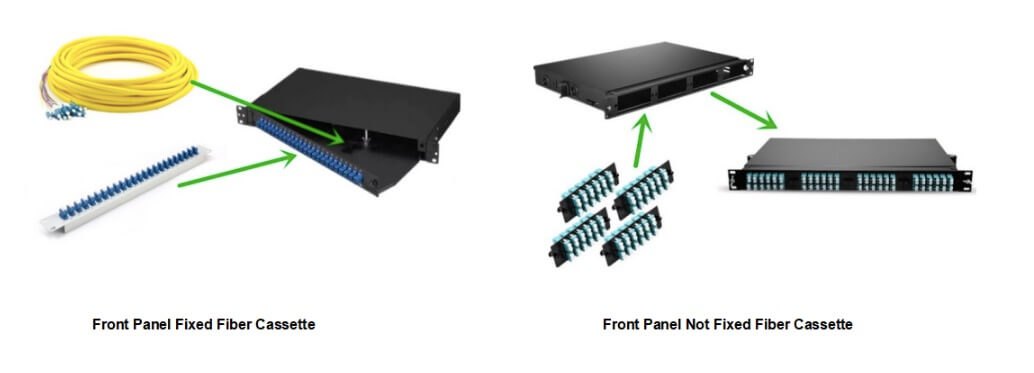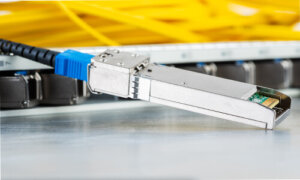In the data center, fiber cassettes are an essential part of cable management. They offer easy management, high flexibility, and time-saving benefits. This article aims to provide a comprehensive introduction to fiber optic cassettes.
1. What is a Fiber Cassette?
A fiber cassette is a type of networking device that facilitates efficient cable management. It combines splicing solutions and patch cords into a compact package, providing simple access to adapters and connectors. Rack-mounted fiber cassettes are commonly used in data centers, with a standard size of 19 inches and varying heights of 1RU, 2RU, 3RU, 4RU, and so on.

2. Types of Fiber Cassettes
Fiber cassettes can be classified based on the use case, front panel, and fiber termination.
2.1 Use Case
1RU rack-mounted fiber cassettes are categorized into three types: clamshell, sliding, and rotational fiber cassettes. Clamshell fiber cassettes are the earliest type, and although they are inexpensive, they are not user-friendly. Sliding and rotational fiber cassettes are more expensive, but they are easier to install and maintain cables inside the cassette.

2.2 Front Panel
Fiber adapters are an essential component of a fiber cassette and are typically installed on the front panel. Fiber cassettes can be categorized as fixed or not fixed based on the front panel. Fixed front panel fiber cassettes are standard 19 inches and have a fixed number of fiber adapters. Non-fixed front panel fiber cassettes can accommodate 3 or even 5 detachable fiber adapters, making them ideal for high-density cabling and flexible cable management.

2.3 Fiber Termination
Fiber cassettes can be categorized based on the fiber termination method: pigtail fusion splicing and pre-termination fiber cassette. Pigtail fusion splicing fiber cassettes have a fiber splicing tray for managing and placing spliced fibers on the working site. Pre-termination fiber cassettes only have spools for managing fiber optic cables, eliminating the need for fiber termination on the working site and saving installation time and labor costs.

3. Features and Benefits
Fiber cassettes offer high density, high capacity, high compatibility, low insertion loss, easy installation and operation, versatility, and ease of deployment.
4. Applications
Fiber cassettes are used in data centers, FTTH access networks, telecommunication networks, CATV networks, local area networks (LAN), and other applications.

5. Conclusion
Fiber cassettes are a crucial part of structured cabling, simplifying the complexity of cable management and saving time and labor costs. Bonelinks specializes in providing one-stop total fiber optic solutions for all fiber optic application industries worldwide. Contact us if you have any requirements.




